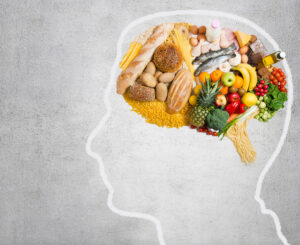Eating is one of life’s greatest pleasures, and overeating is one of life’s growing pains. The process of food intake seems to be organized on a cellular level like a relay race: As we eat, the baton is passed between different teams of neurons until we have consumed the appropriate amount of energy. This is the conclusion of a recent study by researchers at Friedrich-Alexander-Universität Erlangen-Nürnberg (FAU). Through this complex mechanism, the brain probably ensures that we neither eat too little nor too much. Disruptions to this process can lead to eating disorders such as anorexia or binge eating. The results have been published in the Journal of Neuroscience .
What Happens in the Brain When We Eat
In order to survive, we need to regularly replenish our energy by eating. This process is coordinated in the hypothalamus, an important control center in the brain. The hypothalamus constantly receives important information from our body and our environment, such as whether it is day or night or whether our blood sugar levels are low. Based on this data, it triggers certain innate behaviors, such as going to bed when it is dark or going to the fridge when we are hungry.

But how does the brain ensure that we don’t stop eating once the initial hunger subsides and the stretch receptors in the stomach signal that food is available? “When we eat, we quickly switch from what we call ‘appetitive’ behavior to ‘consumptive’ behavior,” says Prof. Dr. Alexey Ponomarenko, Professor of Systems Neurophysiology at the Institute of Physiology and Pathophysiology at FAU. “We know little about how the brain controls the duration of this consumption phase. It should be neither too long nor too short so that we get the right amount of energy.”
Under the leadership of Prof. Ponomarenko, the FAU scientists, together with a team from Cologne University Hospital , investigated what happens in the brain when we eat. The researchers studied the mouse hypothalamus, which is similar in structure to the human hypothalamus. The researchers analyzed the electrical activity of a specific region of the hypothalamus using an artificial intelligence method. This enabled them to determine which neurons fire – i.e. generate electrical impulses – at certain times during food intake.
Research Could Help Alleviate Eating Disorders
The scientist was able to identify four different teams of neurons that become active one after the other during eating. These groups of neurons work together in a similar way to relay runners, with each participating in different phases of the race. The researchers suspect that these teams weigh the information they receive from the body differently – for example, the blood sugar level, the amount of hunger hormones and how full the stomach is. The fourth team could, for example, give more weight to the stretch sensors than the first team. In this way, the hypothalamus can ensure that we neither eat too little nor too much.
The researchers also investigated how the neurons within each team communicate with each other. It has long been known that neurons have a rhythm of activity: There are times when they are particularly excitable and times when they hardly fire at all. These phases alternate regularly – often ten times a second or more. In order to communicate, neurons have to vibrate in the same rhythm. It’s like a walkie-talkie: both devices must be set to the same frequency, otherwise all you hear is static.
They have now been able to show that the teams of neurons involved in food intake all communicate on the same frequencies. In contrast, groups of neurons responsible for other behaviors – such as exploring the environment or social interaction – prefer to communicate on a different channel. This probably makes it easier for the neurons involved in eating to exchange information and stop the eating process at the right time. This finding could even have therapeutic potential: It is already possible to influence the rhythm of neurons from the outside, for example using oscillating magnetic fields. Perhaps the communication of these “feeding teams” could be improved in this way. If successful, this could help to alleviate eating disorders – at least that is the long-term hope. In mice, the oscillatory behavior of neurons can be influenced even more directly by optogenetic manipulations. The researchers are now planning a follow-up study to investigate how this affects their eating behavior.
Influence of Leptin and Ghrelin on Our Eating Behavior
Previous research has already investigated neurons and hormones associated with our eating behavior, such as overeating, and which brain circuits play a role in eating disorders. In previous studies, researchers at the University of Washington School of Medicine systematically analyzed lateral hypothalamic glutamate neurons. They found that neurons in the lateral habenula were more responsive than neurons in the ventral tegmentum during feeding in mice, suggesting that these neurons may play a greater role in controlling feeding behavior.
The researchers also investigated the influence of the hormones leptin and ghrelin on our eating behavior. Both leptin and ghrelin are thought to regulate behavior through their influence on the mesolimbic dopamine system, a key component of the reward pathway in the brain. The researchers found that leptin dampens the activity of neurons projecting to the lateral habenula and increases the activity of neurons projecting to the ventral tegmental area. However, ghrelin has the opposite effect. It has been shown that the brain circuits that control food intake overlap, at least partially, with the brain circuits involved in drug addiction.


